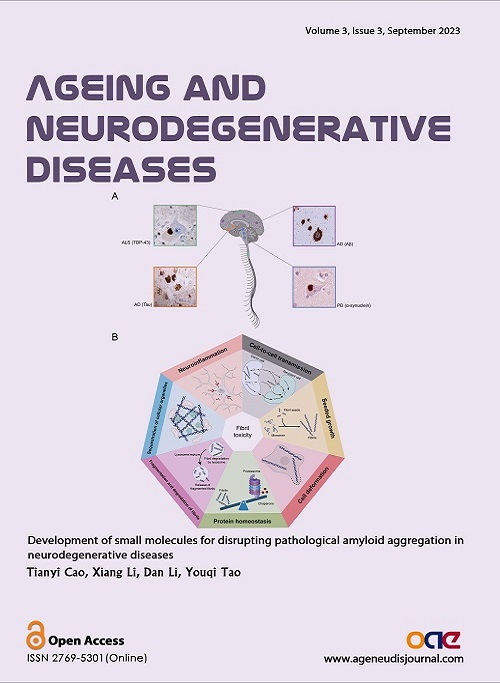Volume 3, Issue 3 (September, 2023) – 10 articles
Cover Picture: Neurodegenerative diseases (NDs), encompassing Alzheimer’s disease (AD), Parkinson’s disease (PD), and amyotrophic lateral sclerosis (ALS), are often characterized by the formation of pathological amyloid aggregates, predominantly composed of proteins like amyloid-β, tau, α-synuclein, TDP-43, and others. These amyloid aggregates inflict significant neuronal harm and incite inflammation. This review underscores the potential of small molecules as innovative therapeutic interventions, designed to influence the formation, stability, and breakdown of these pathological amyloid aggregates, which could potentially modify the disease’s progression and minimize its neurotoxic effects. This review first sketches the pathways and mechanisms involved in amyloid aggregation, followed by an in-depth analysis of recent advances in formulating small molecules that directly target these damaging aggregates. This includes various strategies such as inhibiting fibril formation, fostering off-pathway non-toxic oligomers or amorphous aggregates, disaggregating established pathological amyloid fibrils, and enhancing the protein quality control system to combat amyloid aggregation. In the end, this review identifies the challenges and opportunities involved in transitioning these molecules into effective treatments, focusing on critical factors such as penetration of the blood-brain barrier, target specificity, and safety considerations. This review, thus, presents a comprehensive overview of the potential role of small molecules in tackling NDs typified by amyloid aggregation.
view this paper 







